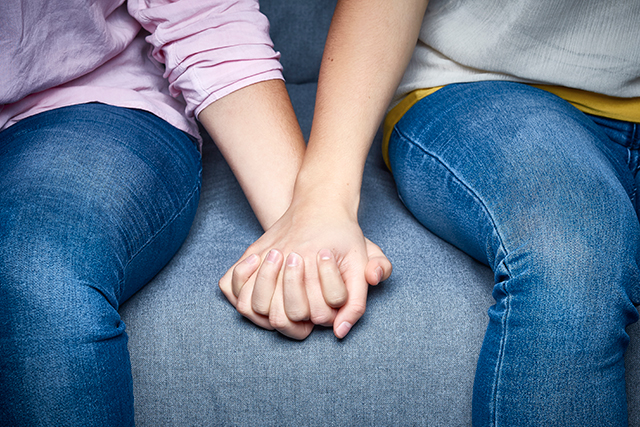Identifying the unique challenges of specific patient populations with breast cancer must be a priority to provide complete care for the whole person. This sentiment could not be truer for women who identify as lesbian, who often feel invisible and misunderstood by the healthcare system. This interview serves as a platform for a much-needed conversation about disparities experienced by this patient population and as a conduit for proposed strategies to overcome barriers to care. Providing a deeper understanding of stressors unique to lesbians is crucial for a culturally competent and inclusive practice that promotes respect and support.
Some studies show that lesbians have a higher risk of breast cancer. The research indicates that this is not due to sexual orientation but to shared risk factors including not having children; having children later in life; and having higher rates of obesity, smoking, and alcohol use (P. Damaskos, PhD, LCSW, OSW-C, oral communication, April 2018). Many lesbians may not seek screening due to a perceived low risk of breast cancer and stressors associated with mistrust of the healthcare system. Fears of discrimination and stigmatization when disclosing one’s sexual orientation increase stress and may delay treatment, contributing to poorer outcomes. 1
I spoke with Penelope Damaskos, PhD, LCSW, OSW-C, director of social work at Memorial Sloan Kettering Cancer Center, who shared her expertise on these disparities. Dr Damaskos discussed disclosure and barriers to care, and offered suggestions on how a more inclusive message could be effective in supporting this diverse group of women. Our conversation begins with Dr Damaskos addressing breast health community outreach and its current limitations.
DR DAMASKOS: The jury is still out in terms of accurately explaining what is going on with such a diverse group of people as lesbians and the risk factors they face. A real problem is how we outreach to the LGBT [lesbian, gay, bisexual, transgender] population about cancer risk, especially images displayed at walks, awareness activities, etc. It is a very heteronormative type of imagery. Many lesbians don’t see themselves reflected in those images and, in turn, might not see themselves at risk. There may be misconceptions about scheduling screenings that would detect cancers earlier. If they do not perceive themselves at risk, and it is not being reflected back to them, they may opt out of these services. We in the cancer communities need to do a better job of connecting the dots for all women, especially those that the research tells us are at higher risk.
FORS: Fears of discrimination and mistrust are present for many lesbians. They may decide whether or not to disclose their sexual orientation based on the fear that this will lead to less support from their healthcare providers.1 Considering this, is it helpful for patients to share their sexual orientation with their healthcare team? How can we create a safe environment for doing so?
DR DAMASKOS: The simple answer is “Yes.” Practitioners need to understand the person in front of them is an individual with her own personal history. These patients have intersecting identities — lesbian, Asian American, mother, professional athlete, etc — that contribute to their health, strengths, and risks. The more patients feel comfortable disclosing their sexual identity, the better it is for their overall care.
Treatment centers can provide gay-positive literature in the waiting room to demonstrate a place that is inclusive, signaling that LGBT persons are not an invisible population. Centers can also use a more inclusive registration form with questions about marital status and gender identity beyond the male/female wife/husband binaries, also signaling an open and understanding environment. How patients are questioned about their lives and partners, without making assumptions, will go a long way toward making lesbian women feel understood by their healthcare providers and ultimately more open.
